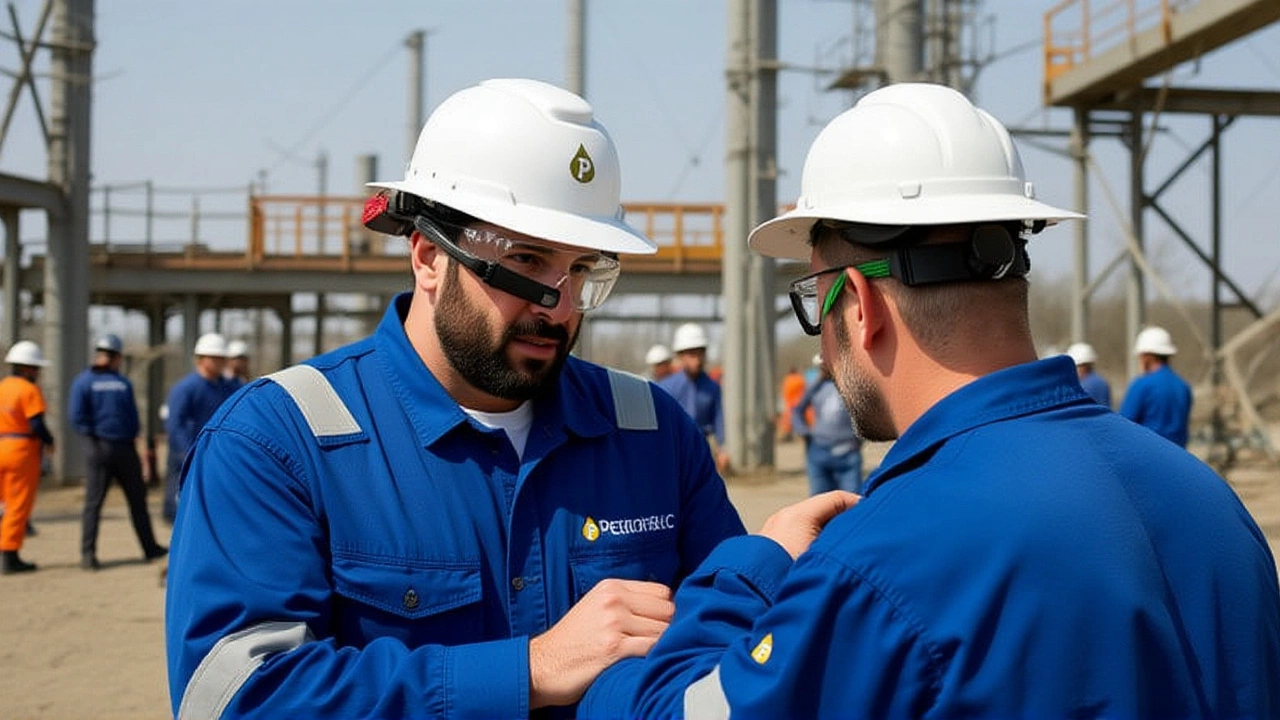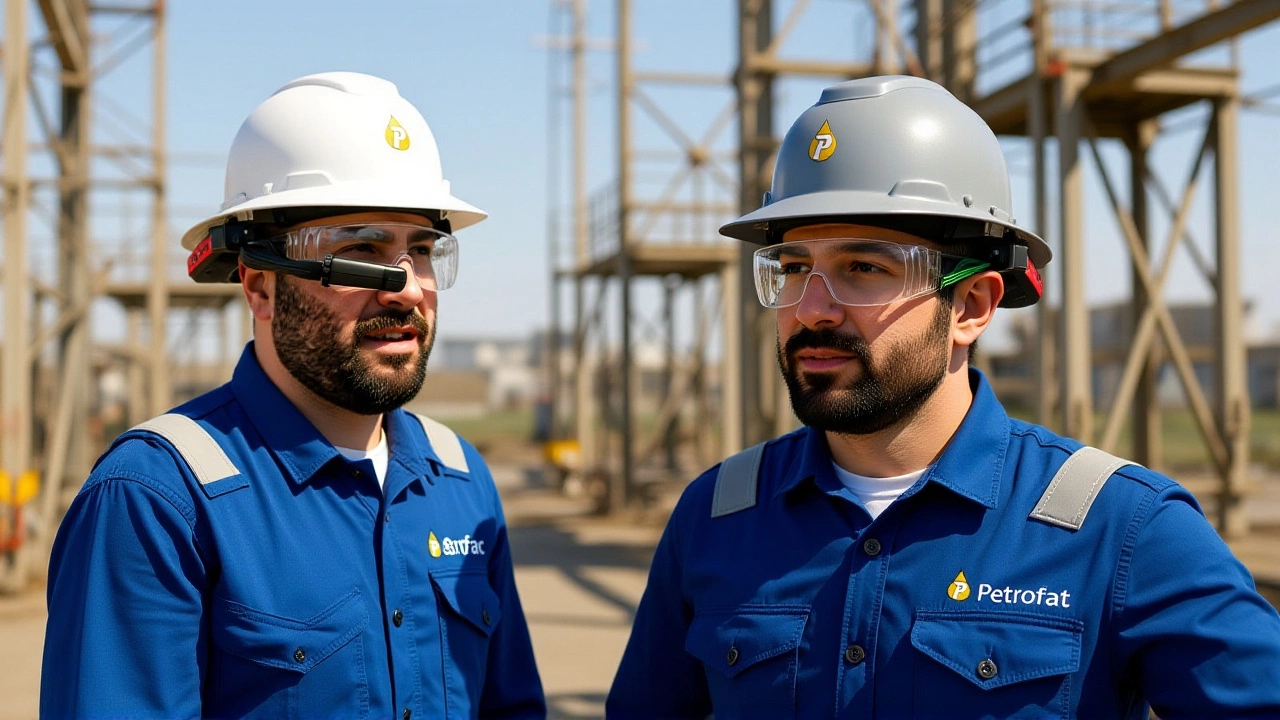When Petrofac filed for administration on Monday, October 27, 2025, it wasn’t just another corporate collapse—it was a seismic shock to the heart of Britain’s offshore energy sector. The Weybridge-based contractor, a pillar of North Sea operations for decades, now finds itself in the hands of insolvency practitioners, with 2,000 direct UK jobs hanging in the balance. Most of those jobs are in Scotland, where crews work on rigs, maintain subsea infrastructure, and keep the lights on for one of the UK’s last major hydrocarbon hubs. The clock is ticking. And the race isn’t just to save a company—it’s to save entire communities.
The Collapse of a North Sea Giant
Petrofac’s administration filing under the UK Insolvency Act 1986 didn’t come out of nowhere. For years, the company struggled under mounting debt, falling oil prices, and the accelerating shift toward renewable energy. Unlike its rivals who diversified into wind or carbon capture, Petrofac doubled down on aging North Sea assets—assets that now cost more to operate than they generate. The result? A liquidity crunch that became a crisis. The company didn’t announce layoffs or restructuring. It didn’t issue a press release with a CEO’s apology. It simply filed for administration. No fanfare. No warning. Just silence from leadership. The implications are immediate and brutal. Petrofac employs roughly 2,000 people directly in the UK, nearly all of them in Scotland. From Aberdeen’s industrial parks to offshore platforms 100 miles east of the coast, these aren’t just jobs—they’re careers. Fathers and mothers who’ve spent 20 years on the rigs. Engineers who trained at Dundee’s maritime college. Technicians who’ve maintained the same pipelines since the 1990s. Now, they’re waiting for a call that may never come.Supply Chains in Peril
But the damage doesn’t stop at Petrofac’s payroll. The ripple effect is vast. According to The Telegraph’s report, “many more” jobs are at risk across its supply chain—though no exact number was given. Think welding shops in Inverness, logistics firms in Grangemouth, cable manufacturers in Fife, and catering services that feed offshore crews. One small supplier in Peterhead told a local reporter they’d lost 60% of their revenue since Petrofac cut contracts in August. “We’re not asking for a bailout,” the owner said. “We’re asking for a chance to survive.” Even the energy majors are nervous. BP, Shell, and TotalEnergies all rely on Petrofac for maintenance, engineering, and turnaround services. With Petrofac now under administration, those contracts are frozen. Some operators are scrambling to find replacements. Others are delaying maintenance windows—a dangerous gamble in an industry where a single valve failure can mean millions in downtime.Scotland Feels the Sting
This isn’t just an economic issue. It’s a social one. In Aberdeen, the city’s economy has been built on oil since the 1970s. Schools, hospitals, even local pubs—many depend on offshore wages. A 2023 study by the Fraser of Allander Institute found that every direct North Sea job supports 2.4 indirect jobs in the region. That means Petrofac’s 2,000 jobs could be tied to nearly 5,000 more in the local economy. If those vanish, so do property taxes, school funding, and small business revenue. The Scottish government has issued a cautious statement, pledging to “work with administrators to protect employment.” But there’s little they can do without taxpayer intervention. The UK government, meanwhile, has stayed silent. No minister has visited the region. No emergency fund has been announced. The message seems to be: this is the cost of the energy transition.
What Happens Now?
The administrators—whose names haven’t been made public—are now evaluating Petrofac’s assets. The most likely outcome? A break-up. Analysts believe the company’s engineering division, its offshore vessels, and its digital monitoring platforms could be sold off piecemeal. Some speculate that a private equity firm might snap up the North Sea service arm. Others think a competitor like Wood Group or Subsea 7 could absorb key teams. But here’s the twist: no buyer wants a company with empty coffers and legacy liabilities. That’s why the administration process could drag on for months. And every day that passes, more workers get laid off. Some have already been told to stay home. Others are working without paychecks, hoping the administrators will find a lifeline.A Symbol of a Changing Era
Petrofac’s fall isn’t just about bad management or falling oil prices. It’s a symbol of a larger truth: the North Sea is no longer the golden goose it once was. Production has halved since 2000. New discoveries are rare. The UK’s oil and gas production now accounts for less than 1% of global supply. Meanwhile, offshore wind is booming—Scotland alone has 12GW of installed capacity and plans for 20GW by 2030. The irony? Petrofac had the chance to pivot. It could have invested in wind turbine maintenance, hydrogen infrastructure, or carbon storage. But it didn’t. And now, as the lights dim on its North Sea operations, the question isn’t whether it can be saved—it’s whether the UK can save the people who built it.Frequently Asked Questions
How many jobs are truly at risk because of Petrofac’s administration?
Exactly 2,000 direct UK jobs are at immediate risk, with nearly all located in Scotland, particularly around Aberdeen and the Moray Firth. But indirect impacts could push the total closer to 5,000 jobs when factoring in supply chain partners, contractors, and local businesses that rely on Petrofac’s workforce. The Fraser of Allander Institute estimates each offshore job supports 2.4 additional local jobs.
What does administration mean for Petrofac’s future?
Administration means an independent insolvency practitioner now controls Petrofac’s assets, with three possible outcomes: rescue as a going concern, a sale of parts, or liquidation. A full collapse is unlikely, but the company as it exists today probably won’t survive. The most probable path is a break-up, with its engineering teams, vessels, and software assets sold to competitors like Wood Group or Subsea 7.
Why hasn’t the UK government stepped in to save these jobs?
The government has avoided direct intervention, citing the need to respect market forces and the energy transition. Unlike past oil crises, there’s no political will to prop up fossil fuel contractors. Instead, ministers are redirecting funding toward offshore wind and hydrogen projects. The message is clear: the future isn’t in North Sea oil—it’s in renewables. Workers are being urged to retrain, but support programs remain underfunded.
Are other North Sea contractors at risk too?
Yes. Several mid-tier contractors, including Proserv and Aker Solutions’ UK division, have reported declining revenues and cost-cutting measures. Petrofac’s collapse has triggered a domino effect—clients are delaying contracts, banks are tightening credit, and suppliers are going under. The North Sea’s service sector, once a powerhouse, is now fragile. Experts warn that without a coordinated transition plan, more layoffs are inevitable.
What’s being done to help Petrofac workers find new jobs?
The Scottish Government’s Energy Transition Fund has pledged £50 million to reskill workers, but only 1,200 of the 2,000 affected employees have been registered so far. Training programs in offshore wind, hydrogen maintenance, and digital automation are available, but many workers—especially those over 50—are skeptical. The real challenge isn’t skill gaps—it’s geography. Most jobs are in Aberdeen, but new wind farms are in the Firth of Forth or off the Welsh coast. Relocation isn’t easy.
Could Petrofac be bought and revived as a green energy company?
It’s theoretically possible, but unlikely. The company’s brand is tied to oil and gas, and its infrastructure isn’t easily adaptable to renewables. A buyer would need to invest hundreds of millions to retool its fleet and retrain its workforce. Private equity firms are looking for quick returns, not long-term transformations. The real hope lies in public-private partnerships—where government subsidies and industry collaboration could repurpose Petrofac’s assets for carbon capture or offshore wind maintenance.
